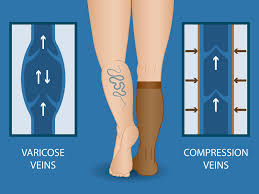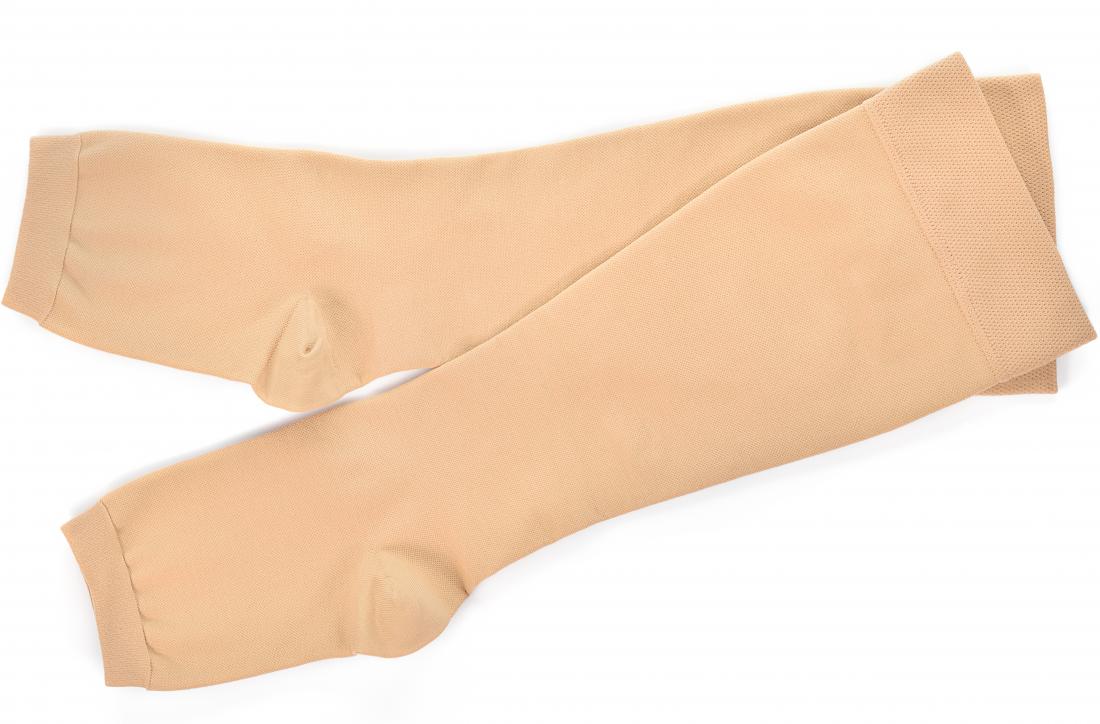 What are compression stockings and how do they work? Compression stockings are a popular and effective treatment option for a variety of vascular conditions, including varicose veins, deep vein thrombosis (DVT), and lymphedema. These specialized stockings work by applying pressure to the legs, promoting better blood flow and reducing swelling. If you’re considering compression stockings as a treatment option, here’s what you need to know about how they work and who can benefit.
What are compression stockings and how do they work? Compression stockings are a popular and effective treatment option for a variety of vascular conditions, including varicose veins, deep vein thrombosis (DVT), and lymphedema. These specialized stockings work by applying pressure to the legs, promoting better blood flow and reducing swelling. If you’re considering compression stockings as a treatment option, here’s what you need to know about how they work and who can benefit.
Compression Stockings: How Do They Work?
Compression stockings work by applying pressure to the legs, promoting better blood flow and reducing swelling. The stockings are designed to be tightest around the ankle and gradually loosen as they go up the leg, creating a graduated compression effect. This helps to push blood back up the legs and toward the heart, reducing the risk of blood pooling and the development of blood clots.
Who Can Benefit from Compression Stockings?
Compression stockings can benefit a wide range of people, including those who:
- Are pregnant: Pregnancy can increase the risk of varicose veins and swelling in the legs, making compression stockings a popular treatment option for pregnant women.
- Have varicose veins: Compression stockings can help reduce the appearance of varicose veins and prevent them from getting worse.
- Have deep vein thrombosis (DVT): Compression stockings are often prescribed as part of the treatment plan for DVT, helping to prevent blood clots from forming and reducing the risk of complications.
- Have lymphedema: Compression stockings can help reduce swelling and discomfort associated with lymphedema, a condition that causes fluid buildup in the legs.
- Are recovering from surgery: Compression stockings can help improve circulation and reduce the risk of blood clots after surgery.
- Have a job that requires prolonged sitting or standing: Sitting or standing for long periods of time can increase the risk of varicose veins and swelling in the legs, making compression stockings a popular choice for those who work in jobs that require prolonged periods of sitting or standing.
Types of Compression Stockings
There are several types of compression stockings available, each with different levels of compression and materials. The most common types of compression stockings include:
- Gradient compression stockings: These stockings have the tightest compression at the ankle and gradually loosen as they go up the leg, creating a graduated compression effect.
- Anti-embolism stockings: These stockings are designed to prevent blood clots in people who are at risk for DVT or other vascular conditions.
- Custom-fit stockings: These stockings are custom-made to fit the patient’s exact measurements, providing a more precise fit and better compression.
Choosing the Right Compression Stockings
Choosing the right compression stockings can be overwhelming, as there are many different types and styles available. It’s important to talk to your vascular surgeon about which type of compression stockings would be best for your individual needs. They can help you determine the right level of compression, fit, and style based on your specific condition and lifestyle.

Contact Dr. Norman Chideckel for Compression Stockings in New York City
If you’re considering compression stockings as a treatment option for your vascular condition, Dr. Norman Chideckel of the Vascular Surgery & Vein Center in New York City can help. With years of experience in the field of vascular surgery, Dr. Chideckel offers a wide range of minimally invasive treatments for vascular conditions, including compression stockings.
Schedule a consultation with Dr. Chideckel today!
Dr. Norman Chideckel
108 East 96th Street
New York, NY 10128
212-993-6133

